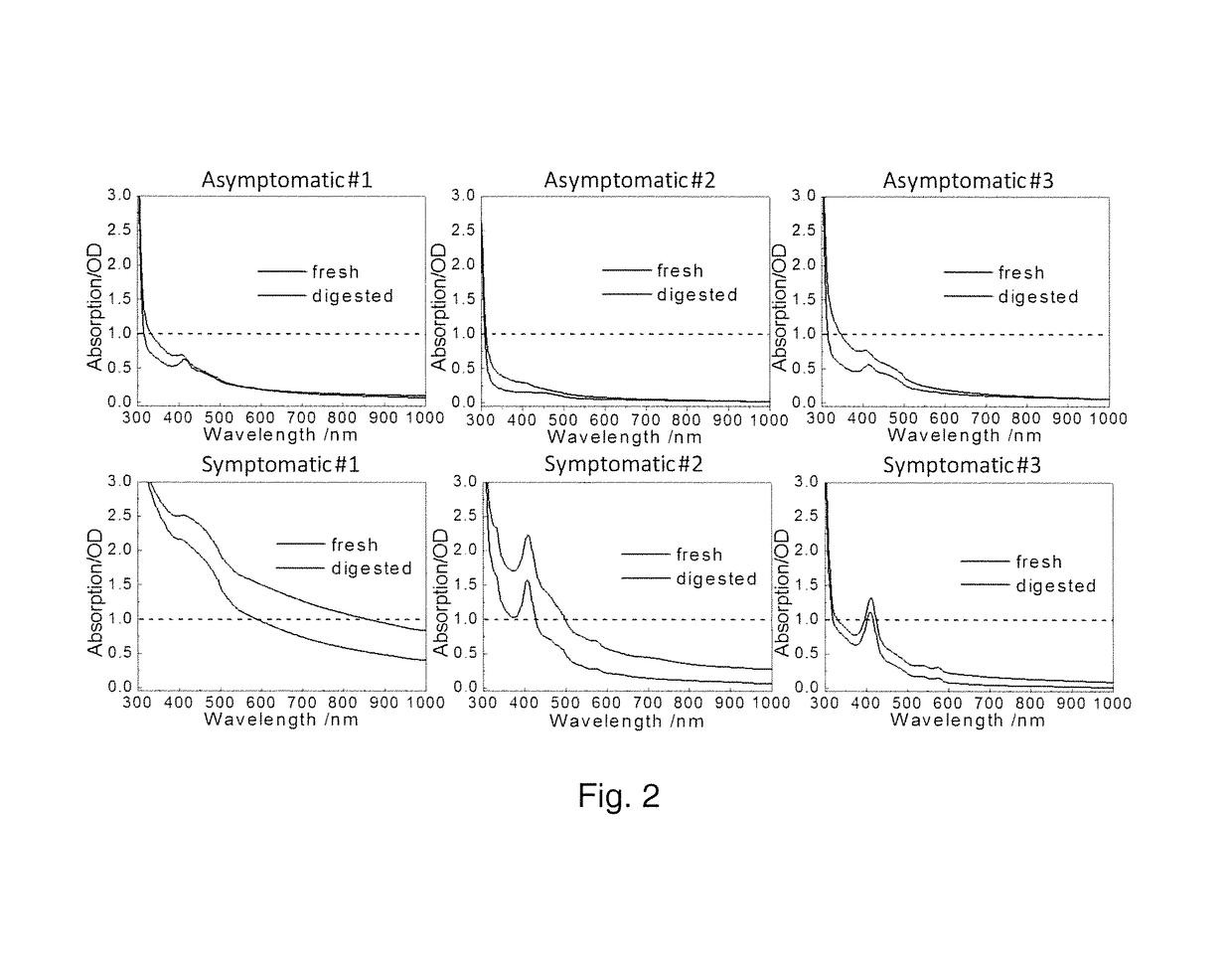Methods and devices for diagnosis of particles in biological fluids
a biological fluid and particle technology, applied in the field of methods and devices for diagnosing particle can solve the problems of limited sensitivity, inability to meet the needs of different operators, inability to diagnose particles in biological fluids, etc., and achieve the effects of reducing the unacceptably high misdiagnosis rate of crystal species, and reducing the misdiagnosis ra
- Summary
- Abstract
- Description
- Claims
- Application Information
AI Technical Summary
Benefits of technology
Problems solved by technology
Method used
Image
Examples
examples
[0053]Set A
[0054]Sample Collection and Preparation
[0055]Synovial aspirates were collected from seven patients presenting “gout-like symptoms” and three asymptomatic synovial aspirates obtained from Anatomy Gifts Registry (Hanover, Md.) where the donors did not have any known joint disease history. Symptomatic sample collection was conducted under the approvals of Institutional Review Boards of institutions where synovial samples were collected (Metro Health Hospital, Cleveland, Ohio and Henry Ford Hospital, Detroit, Mich.). The patients presented to the clinic with gout-like symptoms and aspirates were collected as part of the normal diagnostic procedure. Symptomatic samples had aggregates within the fluid whereas the asymptomatic samples were clear in appearance. The synovial fluid samples were frozen following collection and kept frozen during shipment and long-term storage at −20° C. The presence of MSU crystals were confirmed by compensated polarized imaging as known in the art....
PUM
| Property | Measurement | Unit |
|---|---|---|
| excitation wavelength | aaaaa | aaaaa |
| power | aaaaa | aaaaa |
| concentration | aaaaa | aaaaa |
Abstract
Description
Claims
Application Information
 Login to View More
Login to View More - R&D
- Intellectual Property
- Life Sciences
- Materials
- Tech Scout
- Unparalleled Data Quality
- Higher Quality Content
- 60% Fewer Hallucinations
Browse by: Latest US Patents, China's latest patents, Technical Efficacy Thesaurus, Application Domain, Technology Topic, Popular Technical Reports.
© 2025 PatSnap. All rights reserved.Legal|Privacy policy|Modern Slavery Act Transparency Statement|Sitemap|About US| Contact US: help@patsnap.com



